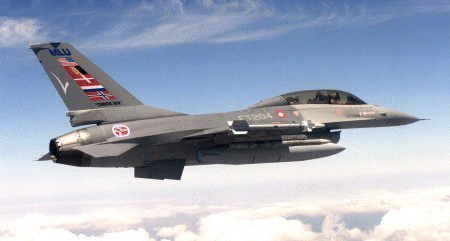Paul Lewis/WASHINGTON DC
European operators of Lockheed Martin F-16A/Bs will be unable to fire precision guided munitions (PGM) until additional improvements to the fighter are undertaken after the completion of the current mid-life update.

The changes required to the fighter's mission computer software and wiring interface mean that PGM's being jointly procured by the Europeans will not be fielded before the end of 2003 and the start of mid-life update (MLU) follow-on improvements to the fighter's mission computer software and wiring interface.
The F-16 Multi-National Fighter Programme members involved in the scheme - Belguim, Denmark, Norway, and the Netherlands - have been joined by Portugal in a scheme to jointly purchase PGMs after the Kosovo conflict demonstrated shortcomings in the Europeans' strike capabilities.
Weapon procurement is to start with the Boeing GBU-32 Joint Direct Attack Munition and Raytheon AGM-154 Joint Stand-off Weapon and will later include the Lockheed Martin Wind Corrected Weapons Dispenser.
Europe's 380 F-16MLUs can only be integrated with these weapons once they receive M3 software, and the new MilStd 1760 wiring interface. The US Air Force's F-16C/Ds are already gaining the capability thanks to the more capable M2plus software and Common Configuration Implementation Programme (CCIP) upgrade.
"There will be a depot level modification programme for M3 starting at the end of 2002, which is about the time the Europeans are wrapping up the modifications for the basic MLU. We'll go into full production in the fourth quarter of 2003 and the last kit delivery is projected for mid-2007," says Chris May, Lockheed Martin F-16, European deputy programme director.
Europe will benefit from other M3 and CCIP related enhancements, including Link 16 datalink, the Joint Helmet Mounted Cueing System newly ordered by Denmark and compatibility with the Raytheon AIM-9X and BGT IRIS-T short range missiles. Europe has not included the Lockheed Martin AGM-158 Joint Air-to-Surface Stand-off Missile as part of its M3 software, although the USAF is considering including the weapon in its M4Plus upgrade.
Europe and the USA are defining requirements for the M4/M4Plus, due to be fielded starting in 2005.
The software is likely to include provision for an improved datalink, updated weapons and Global Air Traffic Management compatibility. Development of a M5 standard system is expected to begin next year in readiness for 2007/08 and is likely to draw on advanced capability improvements now being worked on for the F-16 Block 50 Plus.
Source: Flight International























